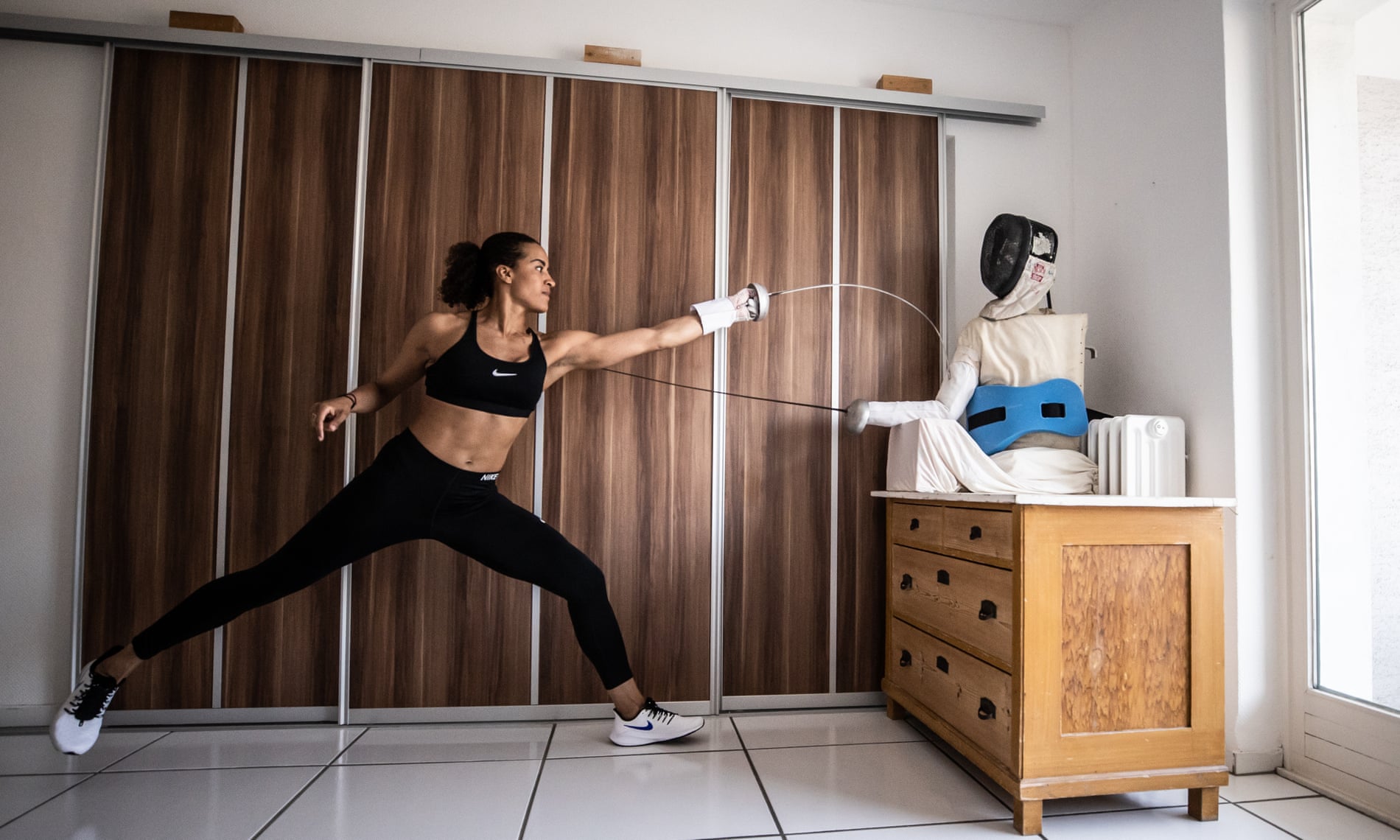As the lockdown continues, one thing that COVID-19 has brought out in athletes the world over is creativity. When you can't get to the gym and don't own the equipment you might usually depend on, you learn to improvise. Therefore, I was inspired to see The Guardian's gallery of athletes from around the world working out at home in a variety of ways. One of the more striking images in the bunch is that of a fencer who is clearly yearning for some interaction with others.
https://www.theguardian.com/sport/gallery/2020/apr/18/working-out-from-home-athletes-find-creative-ways-to-train-in-pictures
opensourcewushu
Sunday, April 19, 2020
Saturday, March 28, 2020
Basic Punching Drills
This post is fairly self explanatory: the attached video gives a number of drills that can help you to improve your punching, even if you don't have a pad holder or bag to hit. Punching practice is worthwhile on a number of levels.
First, it can help you with your punching mechanics so as to make your punching more effective. I remember years ago when I was training in Baltimore with a well known instructor, he walked in on a black sash class and said the equivalent of "none of you all can punch properly." We then spent the next hour learning how to punch all over again so that our mechanics were correct and we were able to issue more power in the punching. In the drills shown below, there are a number of key principles demonstrated, among them the idea that you need to connect with the ground, the hips and waist must turn, and the motions must all add together to support the punch.
 |
| Dr. Paul K Smith punching an instrumented makiwara board circa 2008 |
Thursday, March 26, 2020
Tan Tui 2: "Cross Punch"
One of the more important things in Chinese martial arts is the development of cross body coordination. If you think about the fact that few of us are truly ambidextrous, you begin to see why this can be important. Without taking the care to train bilaterally, you will overdevelop one side, and underdevelop the other, and this can have consequences if you cannot bring your favorite side into play when you are sparring. But contralateral or cross-crawl type motion is not just making certain that both sides are strong enough or fast enough. Rather, it is about the coordination of both sides simultaneously. Cross-crawl or cross-midline movement is used in stroke recovery to help patients retrain their nervous system after injury. It's also been shown to help children with neurointegration of movement.
Tuesday, March 24, 2020
Tan Tui 1: "Coherent Steps"
As the COVID-19 pandemic continues, it is interesting to me that when "stay-at-home" orders are given, they almost always include allowing people to go outside for fitness activities once per day so long as social distancing is maintained. In West Chester borough, Mayor Herrin's clarification of the order indicated that residents could "Engage in outdoor activity, such as walking, hiking or running as long as you maintain social distance (6')." Somehow, then, fitness has become important to us again, and is even cited in governmental orders. Tan Tui can be an element of such fitness training even when one is trapped inside.
Friday, March 20, 2020
Tan Tui Openings
Those of you who have been around OpenSource Wushu for a while know that we spend a great deal of time on Tan Tui, a Longfist style which is sometimes known as the "essence of the northern fists." In class it is typical for us to spend perhaps as much as half an hour a night working on 5 lines both to train stance and technique, but also to work on application. What shows up in the Tan Tui lines, also shows up in many of our other forms - so they provide excellent examples of basics. However, many folks dismiss Tan Tui as being irrelevant for application, having misinterpreted a number of the movements. I commonly hear things like: "I would never swing my arms that way when attacking someone." My response is to remind everyone that Chinese martial arts focuses not just on hitting and kicking, but also on throwing and locking. Many of the movements in Tan Tui presume that you have already closed with your opponent, and as such, the swinging arms are training to throw them after you have, say, caught their leg. But this post will not focus on that. I'm probably going to hold off on applications posts for a while considering that applications of forms are done best with partners, and due to social distancing considerations, we should probably be avoiding partner drills.
Wednesday, March 18, 2020
Back to Basics
So you're stuck at home with nothing to do. You've read all your books, and for some reason haven't downloaded the Kindle app. Then practicing some of your kungfu basics is just the thing. The problem is that you are likely to have space limitations, so full forms are probably not going to cut it. What to do? What is most important to practice? Here's a first take at what to do to keep in shape whilst also working on technique.
Remember that it's better to do a little everyday since this will aid your conditioning, help you with your muscle memory, and ultimately perfecting your basics will have a payoff in your forms and application work.
All the best, and stay healthy,
Sifu Tim
Remember that it's better to do a little everyday since this will aid your conditioning, help you with your muscle memory, and ultimately perfecting your basics will have a payoff in your forms and application work.
All the best, and stay healthy,
Sifu Tim
Sunday, March 15, 2020
Critical Distance
 |
| Seeking critical distance can require some fancy footwork. |
Subscribe to:
Comments (Atom)
